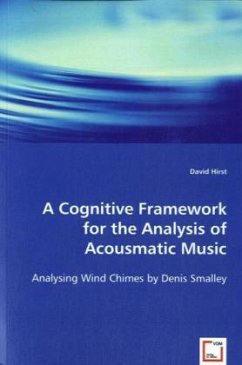The analysis of acousmatic music has traditionally been verydifficult since there is no score to freeze the music in time.Analysis relies heavily on the act of concentrated listening. Sinceaural perception is so crucial to the analysis of acousmatic music,this book poses the questions: Can a framework for the analysis ofacousmatic music be derived from cognition theories, research onthe auditory perception of everyday environmental sounds, andstudies into the perception of Western tonal music? If so, what arethe frameworks attributes? From experimental data documented in therelevant literature, this book draws together the constituents of acognitive framework called the Segregation, Integration,Assimilation and Meaning (SIAM) framework for the analysis ofacousmatic music. The book reports on the practical application ofthe SIAM framework through a detailed analysis of the work WindChimes, by Denis Smalley. This analytical methodology should beespecially useful to auditory cognition professionals, researchersinterested in musical analysis of non-notated music, and composersseeking to gain more insight into musical structures inelectroacoustic music in general.








